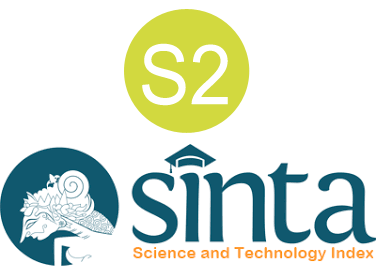Technology Acceptance Model for Reconstructing Al-Islam and Kemuhammadiyah Learning at Universitas Muhammadiyah Sumatera Utara
DOI:
https://doi.org/10.37680/qalamuna.v17i1.6911Keywords:
AIK; Digital Learning; Technology Acceptance ModelAbstract
This study aims to see the influence of Usability Perception, Ease of Use, Attitude, and Behavioral Intention on Technology-Based AIK Learning in Universitas Muhammadiyah Sumatera Utara. Technology is currently an indicator of the development of science. Currently, Universitas Muhammadiyah Sumatera Utara continues to try to develop technology-based learning media towards a world-class university. However, many students are still not maximized with running the technology prepared for teaching, especially in AIK courses. This study uses a quantitative approach, hypothesis testing, and the inner model obtained from data processing using SMART PLS. The conclusion are this study the t-statistic value for variable X1 (perceived usefulness) indicates that perceived convenience does not affect technology-based AIK learning, and the t-statistic value for variable X2 (Ease of Use) indicates that ease of use does not affect technology-based AIK learning. So, the t-statistic value for variable X3 (Attitude) indicates that attitude affects technology-based AIK learning. The t-statistic value for variable X4 (Behavioral Intention) indicates that Behavioral Intention affects technology-based AIK learning. The Technology Acceptance Model (TAM) explains how users accept and adopt technology based on two main factors: perceived usefulness and perceived ease of use. In the context of AIK learning at Universitas Muhammadiyah Sumatera Utara (UMSU), TAM plays a crucial role in shaping the effectiveness and efficiency of technology-based learning.
References
Akrim, A., Setiawan, H. R., Selamat, S., & Ginting, N. (2022). Transformation of Islamic education curriculum development policy in the national education system. Cypriot Journal of Educational Sciences, 17(7), 2538–2552. https://doi.org/10.18844/cjes.v17i7.7685
Al-Maroof, R. (2022). Blended Learning Acceptance: A Systematic Review of Information Systems Models. Technology, Knowledge and Learning, 27(3), 891–926. https://doi.org/10.1007/s10758-021-09519-0
Al-Qaysi, N. (2019). Understanding the differences in students’ attitudes towards social media use: A case study from Oman. In 2019 IEEE Student Conference on Research and Development, SCOReD 2019 (pp. 176–179). https://doi.org/10.1109/SCORED.2019.8896251
Al-Qaysi, N. (2020). An Empirical Investigation of Students’ Attitudes Towards the Use of Social Media in Omani Higher Education. In Advances in Intelligent Systems and Computing (Vol. 1058, pp. 350–359). https://doi.org/10.1007/978-3-030-31129-2_32
Al-Qaysi, N. (2023). Social media adoption in education: A systematic review of disciplines, applications, and influential factors. Technology in Society, 73. https://doi.org/10.1016/j.techsoc.2023.102249
Beer, D. de.. (2021). Approaches to Identify Fake News: A Systematic Literature Review. In Lecture Notes in Networks and Systems (Vol. 136, pp. 13–22). https://doi.org/10.1007/978-3-030-49264-9_2
Cepeda-Carrion, I. (2023). The Mediating Role of Knowledge Creation Processes in the Relationship Between Social Media and Open Innovation. Journal of the Knowledge Economy, 14(2), 1275–1297. https://doi.org/10.1007/s13132-022-00949-4
Chassiakos, Y. (. R. (2020). Current trends in digital media: How and why teens use technology. Technology and Adolescent Health: In Schools and Beyond (pp. 25–56). https://doi.org/10.1016/B978-0-12-817319-0.00002-5
Dhola, K. (2021). A comparative evaluation of traditional machine learning and deep learning classification techniques for sentiment analysis. In Proceedings of the Confluence 2021: 11th International Conference on Cloud Computing, Data Science and Engineering (pp. 932–936). https://doi.org/10.1109/Confluence51648.2021.9377070
Dontre, A. J. (2021). The influence of technology on academic distraction: A review. In Human Behavior and Emerging Technologies (Vol. 3, Issue 3, pp. 379–390). https://doi.org/10.1002/hbe2.229
Ducange, P. (2019). An effective Decision Support System for social media listening based on cross-source sentiment analysis models. Engineering Applications of Artificial Intelligence, 78, 71–85. https://doi.org/10.1016/j.engappai.2018.10.014
Feldman, M. (2021). Community health worker knowledge, attitudes, and practices towards COVID-19: Learnings from an online cross-sectional survey using a digital health platform, UpSCALE, in Mozambique. In PLoS ONE (Vol. 16, Issue 2). https://doi.org/10.1371/journal.pone.0244924
Habes, M. (2020). Digital Media and Students’ AP Improvement: An Empirical Investigation of Social TV. In the 2020 International Conference on Innovation and Intelligence for Informatics, Computing and Technologies, 3ICT 2020. https://doi.org/10.1109/3ICT51146.2020.9311941
Hair, J. F., Hult, G. T. M., Ringle, C. M., & Sarstedt, M. (2021). A Primer on Partial Least Squares Structural Equation Modeling (PLS-SEM). Sage Publications, Sage CA: Los Angeles, CA.
Han, Y. (2021). Analysis of sentiment expressions for user-centered design. Expert Systems with Applications, 171. https://doi.org/10.1016/j.eswa.2021.114604
Hermita, M., Farida, Margianti, E. S., & Fanreza, R. (2019). The determinants and impact of system usage and satisfaction on e-learning success and faculty-student interaction in Indonesian private universities. Malaysian Journal of Consumer and Family Economics, 23, 85–99.
Jahan, M. S. (2023). A systematic review of hate speech automatic detection using natural language processing. In Neurocomputing (Vol. 546). https://doi.org/10.1016/j.neucom.2023.126232
Jain, N., & Raman, T. V. (2022). A partial least squares approach to digital finance adoption. Journal of Financial Services Marketing, 27(4), 308–321. https://doi.org/10.1057/s41264-021-00127-8
Kapoor, A. (2022). TweetBoost: Influence of Social Media on NFT Valuation. In WWW 2022—Companion Proceedings of the Web Conference 2022 (pp. 621–629). https://doi.org/10.1145/3487553.3524642
Keller, D. S. (2020). Choosing the new normal for surgical education using alternative platforms. In Surgery (United Kingdom) (Vol. 38, Issue 10, pp. 617–622). https://doi.org/10.1016/j.mpsur.2020.07.017
Lampropoulos, G. (2022). Augmented Reality and Virtual Reality in Education: Public Perspectives, Sentiments, Attitudes, and Discourses. Education Sciences, 12(11). https://doi.org/10.3390/educsci12110798
Lee, J. Y. (2022). The Impact of Social Media and Digital Platforms Experience on SME International Orientation: The Moderating Role of COVID-19 Pandemic. Journal of International Management, 28(4). https://doi.org/10.1016/j.intman.2022.100950
Lopez, J. (2021). Digital Twins for Intelligent Authorization in the B5G-Enabled Smart Grid. IEEE Wireless Communications, 28(2), 48–55. https://doi.org/10.1109/MWC.001.2000336
Marbán, J. M. (2021). Primary and secondary students’ usage of digital platforms for mathematics learning during the COVID-19 outbreak: The case of the Gaza Strip. Mathematics, 9(2), 1–21. https://doi.org/10.3390/math9020110
Mart, C. V., & Mart, P. A. (2021). Partial Least Squares Structural Equation Modeling (PLS-SEM) Applications in Economics and Finance. In Partial Least Squares Structural Equation Modeling (PLS-SEM) Applications in Economics and Finance. https://doi.org/10.3390/books978-3-0365-2621-8
Martzoukou, K. (2022). A study of university law students’ self-perceived digital competences. Journal of Librarianship and Information Science, 54(4), 751–769. https://doi.org/10.1177/09610006211048004
Mazaheri, E. (2020). Research Directions in Information Systems Field, Current Status and Future Trends: A Literature Analysis of AIS Basket of Top Journals. Australasian Journal of Information Systems, 24, 1–25. https://doi.org/10.3127/ajis.v24i0.2045
Mpungose, C. B. (2020). Are social media sites a platform for formal or informal learning? Students’ experiences in institutions of higher education. International Journal of Higher Education, 9(5), 300–311. https://doi.org/10.5430/ijhe.v9n5p300
Muftah, M. (2023). Impact of social media on learning the English language during the COVID-19 pandemic. PSU Research Review. https://doi.org/10.1108/PRR-10-2021-0060
Nickerson, J. P. (2019). Social Media and Radiology Education: Are We #Ready? Academic Radiology, 26(7), 986–988. https://doi.org/10.1016/j.acra.2018.10.015
Nurzannah, N., Ginting, N., & Setiawan, H. R. (2020). Implementation Of Integrated Quality Management In The Islamic Education System. Proceeding International Seminar of Islamic Studies, 1(1), 1–9.
Osipovskaya, E. (2020). Using Gamification in Teaching Public Relations Students. In Advances in Intelligent Systems and Computing (Vol. 916, pp. 685–696). https://doi.org/10.1007/978-3-030-11932-4_64
Pereira, S. (2019). Young people learning from digital media outside of school: The informal meets the formal. Comunicar, 27(58), 41–50. https://doi.org/10.3916/C58-2019-04
Polanco-Levicán, K. (2022). Understanding Social Media Literacy: A Systematic Review of the Concept and Its Competences. In International Journal of Environmental Research and Public Health (Vol. 19, Issue 14). https://doi.org/10.3390/ijerph19148807
Reisach, U. (2021). The responsibility of social media in times of societal and political manipulation. European Journal of Operational Research, 291(3), 906–917. https://doi.org/10.1016/j.ejor.2020.09.020
Richard, G. T. (2019). Digital and physical fabrication as multimodal learning: Understanding youth computational thinking when making integrated systems through bidirectionally responsive design. ACM Transactions on Computing Education, 19(3). https://doi.org/10.1145/3243138
Saikat, S. (2021). A systematic review of the benefits and challenges of mobile learning during the COVID-19 pandemic. In Education Sciences (Vol. 11, Issue 9). https://doi.org/10.3390/educsci11090459
Stachl, C. (2020). Predicting personality from patterns of behavior collected with smartphones. Proceedings of the National Academy of Sciences of the United States of America, 117(30), 17680–17687. https://doi.org/10.1073/pnas.1920484117
Surameery, N. M. S., & Shakor, M. Y. (2021). CBES: Cloud-Based Learning Management System for Educational Institutions. 3rd 2021 East Indonesia Conference on Computer and Information Technology, EIConCIT 2021, 270–275. https://doi.org/10.1109/EIConCIT50028.2021.9431932
Wong, J. T., & Hughes, B. S. (2023). Leveraging learning experience design: Digital media approaches to influence motivational traits that support student learning behaviors in undergraduate online courses. In Journal of Computing in Higher Education (Vol. 35, Issue 3). Springer US. https://doi.org/10.1007/s12528-022-09342-1
Wong, K. K.-K. (2013). Partial least squares structural equation modeling (PLS-SEM) techniques using SmartPLS. Marketing Bulletin, 24(1), 1–32.
Downloads
Published
How to Cite
Issue
Section
License
Copyright (c) 2025 Robie Fanreza, Mahmud Yunus Daulay, Nurman Ginting

This work is licensed under a Creative Commons Attribution-ShareAlike 4.0 International License.
Authors who submit manuscript retain its copyright and grant publisher right of first publication licensed under a Creative Commons Attribution-ShareAlike 4.0 International License (CC BY-SA 4.0) that allows others to access (search, read, download, and cite), share (copy and redistribute the material in any medium or format) and adapt (remix, transform, and build upon any material) the work for any lawful purpose, even commercially with an acknowledgement of the work's authorship and initial publication in Qalamuna: Jurnal Pendidikan, Sosial, dan Agama.











